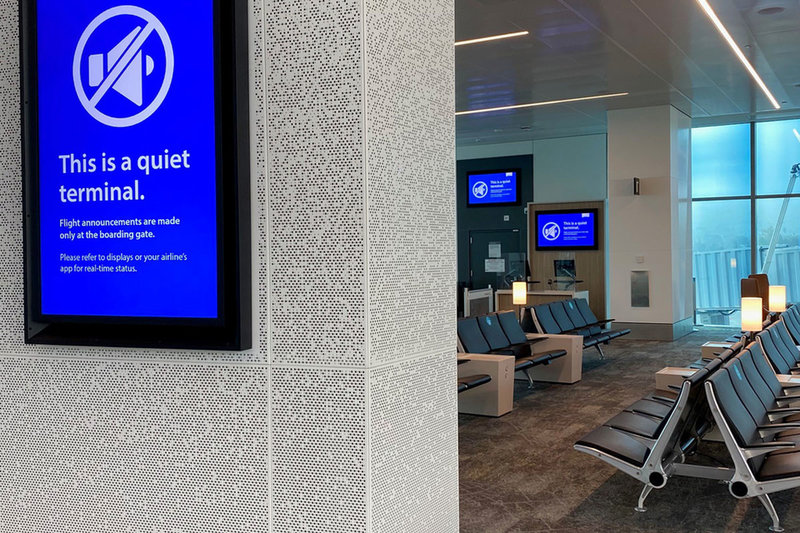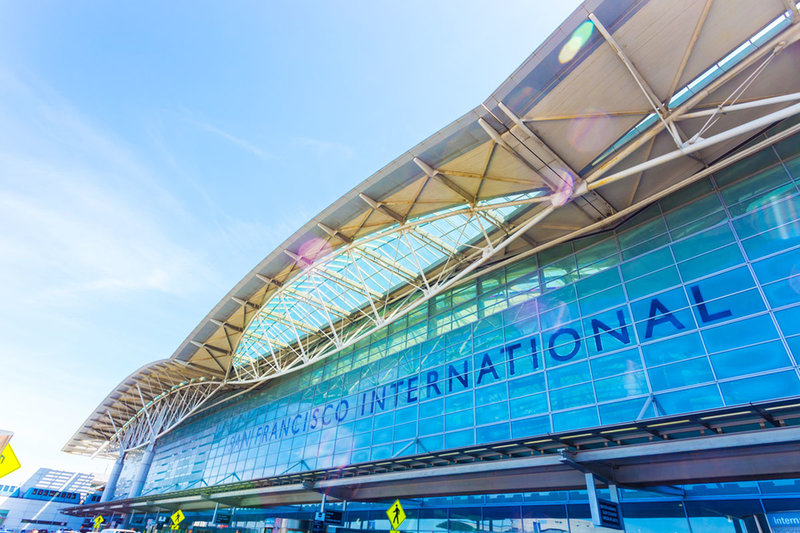AIRPORT PROFILE
Why is San Francisco International making terminals quieter?
San Francisco International is trying to reduce noise pollution on site through its ‘Quiet Airport’ programme. The project includes initiatives such as eliminating over 90 minutes of unnecessary announcements each day and making elevators and walkaways less noisy. Adele Berti finds out more.
Image: copyright
The seventh busiest airport in the US, San Francisco International Airport (SFO) used to be criticised for its prolonged public announcements, loud paging and excessively loud terminals. Now, it is en route to becoming one of the quietest airports in the US as a result of its ‘Quiet Airport’ programme, a two-year initiative aimed at tackling noise pollution at SFO’s four terminals.
Rolled out between the end of 2019 and early 2020, the scheme has already helped remove over 90 minutes’ worth of unnecessary daily noise throughout the airport and reduced overall on-site noise by more than 40%.
San Francisco Airport director of guest experience Christopher Birch discusses how the project came to life and the role it is playing in welcoming passengers back after Covid-19.
The ‘Wild West’ of sound
As Birch explains, ‘Quiet Airport’ was conceived to address customer complaints at SFO’s international terminal.
“The sound environment there is a little bit different [from the other three] and there was no real consistency in the way that public announcements (PAs) were made, so being able to have a conversation with these constant interruptions became problematic,” he says. “We also noticed that all carriers there were pushing their announcements out through all areas of the terminal, for every single flight, and paging off missing customers both in English and in their native language . . . and it was insanity.”
Some airports were really clear to say that we needed to make an infrastructure change in collaboration with our partners
High noise levels were also coming from stereo systems at boarding gates, ticket and check-in counters, as well as automated features such as escalators and moving walkways – making SFO, as Birch puts it, the “Wild West in terms of sound”.
Bringing noise levels down became paramount for the airport, which decided to look across the ocean for inspiration. “In Europe and Asia, [the concept of quiet airports] is somewhat common and some airports were really clear to say that we needed to make an infrastructure change in collaboration with our partners.”
This led to a trial run with SFO’s main carrier United Airlines, which vowed to limit its public announcements to active gates and the gate adjacent to them. The pilot’s success led to a broader, airport-wide rollout between December 2019 and March 2020.

Inside the terminal at SFO. Credit: SFO
Breaking down the ‘Quiet Airport’ programme
The fast spread of Covid-19 in the US gave SFO only a few weeks to test the programme with normal volumes before it had to restrict traffic due to national lockdowns. However, this gave the airport’s legacy airlines a chance to try different parts of the scheme without risking excessive disruptions.
The bulk of the programme was reducing the frequency and duration of unnecessary and intrusive sound through a restructuring of the airport’s entire paging system. With four terminals spanning over 21,000km2, SFO worked to create individual zones that allowed it to push pages out to relevant areas only. “That was where we reduced [total noise levels] by probably 40% or maybe 50%,” he says.
“We physically unplugged [carriers’] ability to make boarding area-wide paging, we removed [this option] from the boarding and the paging systems at the gate,” explains Birch. “In place of that, we provided some tips to the agents on making more effective announcements, such as enunciating, going slower and rehearsing the customer’s name before saying it on the PA.”
The airport then moved on to ban all automatic announcements apart from those made by the Transportation Security Administration and anything safety and security related. “We pushed everything to the website and visual paging,” he continues. “For example, we used to remind people not to get in unauthorised cabs, but that is not really a problem any more thanks to Uber and Lyft, so we removed it.”
We provided some tips to the agents on making more effective announcements
Decibel limits were also imposed in areas operated by SFO’s concessionaires, while passengers were encouraged to engage with airline apps, consult flight information screens or use the SFO text service to receive flight information updates. “At one point we had a situation where we had three carriers next to each other,” Birch says. “All three had their separate systems, all playing music […] so we also told them they could not have stereo systems at boarding gates.”
Achievements include reducing individual paging from 492 to 261 individual occurrences, whose cumulative duration went down from 145 minutes to 58 minutes. This equalled a 47% reduction in occurrences and a 60% cut to duration.

The exterior of SFO in 2016. Credit: Daily Travel Photos / Shutterstock.com
Improving the ambience at terminals after Covid-19
At the core of Quiet Airport was the idea that customers appreciate a less stressful airport environment. “Airports are places where people are nervous and anxious and you really don't want to add to that,” comments Birch. “So whatever noise or sound is employed as a marketing vehicle or just to improve the ambience has to take everybody into consideration.”
SFO first realised this in 2012, when it opened a yoga room at its Terminal 2. “Not a lot of people use the yoga room but everybody wants a picture of it and I think that was our first inkling of the fact that there's a health and wellness component at the airport,” he says. “Health and wellness concepts definitely belong in an airport because a lot of people value that, whether it's the yoga room or sensory rooms or the type of food that we're providing.”
This concept will acquire even more importance for SFO in the aftermath of Covid-19, which has added further stress to flying. “This is the industry's biggest reset button, it's never going to happen again,” Birch continues. “So we're feeling like now is the time to implement new things and we can figure out what was really making customers’ experience miserable.”
This is the industry's biggest reset button, it's never going to happen again
With most of the scheme now underway, Birch and his team are now working on decreasing noise from airport equipment such as elevators, escalators and walkways, as well as looking at how to tackle anti-social behaviour on site.
“An area we’re curious about is mobile devices and speakers,” he says. “A lot of people have absolutely no reservations about having conversations on their phone or listening to music on speakerphone, so we’re working on a campaign that makes the point that most people really don't want to listen to someone’s calls or music.”
Once these are implemented, efforts can then move on to supporting passengers with disabilities, who may struggle to cope with San Francisco’s quiet programme. Becoming a silent airport will have to wait until issues such as emergency paging and aiding hearing-impaired customers are fully addressed. “We have Americans with Disabilities Act requirements here and that's going to be the tough one to incorporate,” Birch concludes.